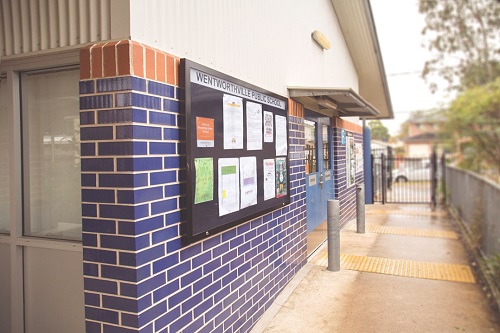
Schools in the West Nile have been plagued with chaotic strikes that have led to the destruction of property worth millions of shillings. Statistically, there are over 10 schools where students have become unruly, but in the same region.
Does this say something about the schools and students in the region? Perhaps.
Before we discuss the solutions to the problem, let’s look at the causes first;
- Lack of communication between students and teachers.
Sometimes, some schools are rigid in principle, and there exists no valid means of communication between teachers and students.
This leaves students with no alternative other than striking, or at least that’s what they think.
- Unruly students.
Students are from different backgrounds, and some have no proper moral upbringing. This creates a risk of chaos if there is a reasonably high number of such students.
- Unsatisfactory standards.
Some schools are systematically corrupt, that the students don’t get what they pay for. This usually happens when students are underfed or served poor quality food.
- Comparison of standards with other schools.
Some students, out of entitlement, compare the standards of their school, with other schools, without consideration of plausible differences like school fees paid. If properly incited, there can be a rampage.
- Politics in play.
This is where teachers use students to fight their own administrative battles. In most cases, this happens when teachers want a new head teacher, or to get one teacher out of the way.
- Peer pressure.
A couple of students join these strikes because their friends have joined, and they don’t want to be the black sheep.
In majority of the strikes we see, many of the above factors are usually in play, though not necessarily all of them. Now, the mere fact that we know the causes means there is a way we can find a solution to these problems. Let’s take a look at them below.
1. BRIDGE THE COMMUNICATION GAP.
Every situation that has gone out of hand, is always traced back to someone who couldn’t voice their grievances, or someone that wasn’t listened to.
Either way, communication is always the best form of preventing, let alone solving conflict. Here’s how you can bridge the communication gap between students and the administration;
- Suggestion boxes.
In every school, there is a good number of students that find it hard to assert their interests or voice their opinions. This is where a suggestion box comes in handy.
With a suggestion box, students will be able to voice their opinions in the most candid way possible.
No doubt, there will be a lot of crap in the box, because some students just can’t communicate well, besides insults.
- Meet students with burning issues.
Some students with burning issues will feel uncomfortable writing a letter. This is probably because they aren’t sure you’ll read it in time.
This is why you have to delegate time to meet students, each one privately, to listen to their grievances.
- Make students a part of the decision making process.
Every decision you make directly affects your students, and could be the difference between order and chaos.
This necessitates the inclusion of students in the process, by voting on the decisions, giving new ideas among others.
- Explain why you do things the way you do them.
Many times, students deserve an explanation on how the school runs, and how the principles are set the way they are set.
They also deserve to know what can and what can’t change, and it’s your role to explain all that to them.
2. SET YOUR DISCIPLINARY STANDARDS.
Traditional schools have thrived on peace and have seen less or no strikes.
All this is because they have set rules and made it plainly clear to parents and students, so that by the time students come to schools like these, they know what they’ve come for.
Here’s how you can set disciplinary standards in your school;
- Set a few core rules, and make sure everyone knows them.
By handing out pamphlets to all new students and making sure they grasp all these rules, you set the right foundation.
You just have to make sure they don’t forget these rules. Get them on all notice boards or hold regular assemblies to remind your students.

- Set penalties and always execute them.
For people to follow rules, they have to know what happens if they break them.
Therefore, you have to make sure your students know what happens if they break the rules, and punish anyone who breaks them, with no exceptions.
3. CREATE A SYSTEMATIC TRUCE BETWEEN EMPLOYEES.
Part of why large organizations usually thrive for a long time, is because they create systems that stabilize the working environment. These include;
- A hierarchy of leadership.
All your employees have to know who is, who isn’t, who can and who can’t be in charge.
When teachers use students for their own political wars, it means they also consider themselves at a certain level of the hierarchy.
- Rules & penalties.
Rules, rules, rules! Everything in the world is predicated upon rules and regulations.
Teachers have to have their limits on how much authority they have over their students.
Additionally, they have to know what happens if they happen to cross the red line.
That’s why this kind of politics is played more in government schools than in private schools.
- Promote cooperation.
In a company, business or organization, there always has to be cooperation amidst employees, which can help them put their grudges aside for a while, and focus on the work at hand.
Employees will always have grudges, but whether your work environment will help or suppress those grudges, is entirely up to you.
4. PLANT STUDENT SPIES.
This is the most effective, though delicate measure. Matter of fact, I was part of a school where this was done, and it was effective.
This is where students have their ears to the ground, and are always ready to notify you about any irregularities they find. Here’s a couple of what they can find;
- Students’ groups and their heads
If you’re the type that’s sick and tired of peer groups and student conspiracies, it’s time you got a few students out there to help you spot them.
High chances are, you’ll get valuable information on what’s about to get out of hand, and you’ll be able to prevent it in time.
- Teachers behind conspiracies
Teachers are usually perceived by students, as above the law, and beyond reproach. However, your spies won’t mind telling on them.
In case of any conspiracy that involves teachers and students, they’ll know about it first and tip you on it.
But with such an idea in play, you have to be really careful, because students are capable of harming these spies in all conceivable ways. But here’s how they can stay clandestine;
- Don’t meet with them.
Communication might be the hardest thing, as even one meeting could compromise their status.
Instead of meeting with them on the school premises, you can have someone get this information from outside the school premises.
Gadgets are also a good idea, but that could be a ticking time bomb, because anytime, they can get busted.
- Don’t exclude them from the punishments.
If there’s a quick and obvious way to spot a snitch, it’s when they claim to be part of the group, but don’t receive any penalties.
- Don’t declare them.
Your students and teachers don’t have to know that you have spies around.
This is because your students are just students at the end of the day, and not professional spies. If one knows where to look, he can find them even within less than a week.
However, implementing spies is hard, and somewhat unethical. Your student spies stand a chance of lagging behind in academics.
5. DISCOURAGE PEER GROUPS.

Discouraging peer groups is not as simple and straightforward as it sounds. It’s all about creating an environment that doesn’t allow such groups to thrive. The steps you can take include;
- Criminalize gatherings of 3+ students.
In some schools, nobody cares whether there’s a group of 20 students gathered in the compound and what they are talking about. And the next thing you know, there’s a strike that couldn’t be prevented.
By discouraging these groups that aren’t academic discussion groups, it will look like you’re stepping on the freedoms of some students, but it’s worth the trouble.
- Remove the ring leaders
Peer groups thrive under leaders. This means there’s a high chance the group won’t be functional if the leader is taken out of the picture.
As soon as you receive reliable information on who’s influencing the rest, eliminate them with immediate effect.
6. MAKE USE OF PARENTS.
Before you even try to teach your students any morals, they have been groomed by their parents.
Also, if a parent condones their child’s bad conduct, it means you stand absolutely no chance at changing them. Therefore, you can rely on parents to do the following;
- Taking disciplinary action on their children.
Physical punishment, grounding and denying them a couple of privileges are some of the immediate punishments any parent can think of.
- Advising them against notoriety.
Parents know how best to advise their children and talk sense into them. Therefore, you should encourage parents to sit their children down and talk to them.
7. CHECK THE PRIVILEGES YOU OFFER.
Recently, a school in Gulu District closed because of a strike where one student was shot dead. You might wish there were a more reasonable cause, and not a mere football match.
Sometimes, students will feel entitled to having more and more privileges, and will use violence to try and get them. Here’s what you can do.
- Don’t offer what you can’t maintain.
If it’s a privilege, make sure you can maintain it, or at least tell your students that it’s just a once-in-a-while privilege and they don’t have to feel entitled.
- Make it clear to them that it’s a privilege, not a right.
Also, there’s a fine line between rights and privileges. Offer a privilege consistently and whoever you’re giving it to will start complaining about how you’re giving it to them.
When students know that the football match, the dance or the chicken you’ve served them is just because you’re kind enough, they definitely won’t take it for granted.
Conclusion;
It is highly possible that one strike can spark a series of strikes in the same region, but not all schools are influenced by this. Therefore, it is more of an internal than external issue. This means teachers and the school administrators can work together with parents to morally shape their children individually.

Comments are closed.